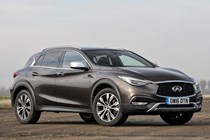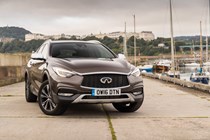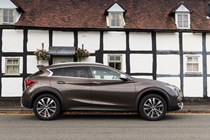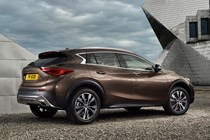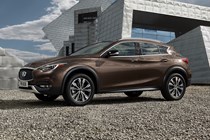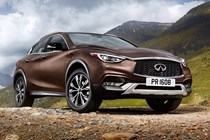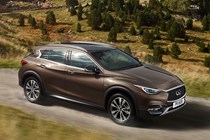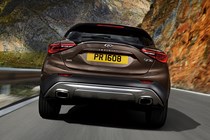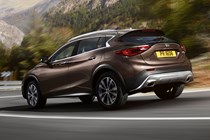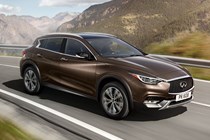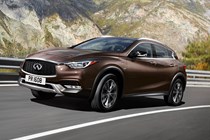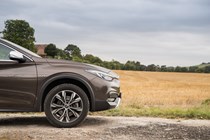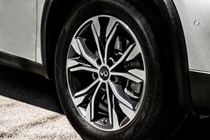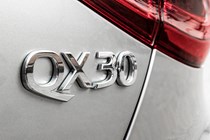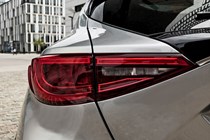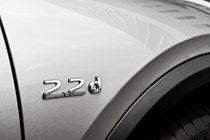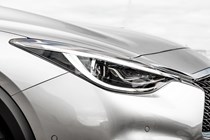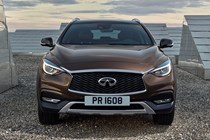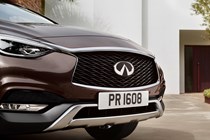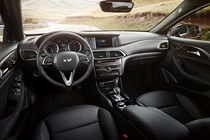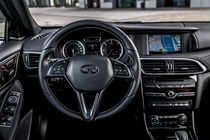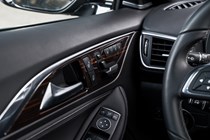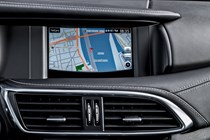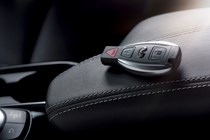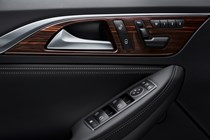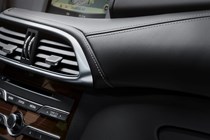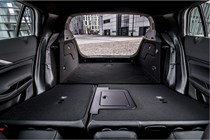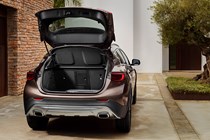
Infiniti QX30 SUV (2016-2020) engines, drive and performance
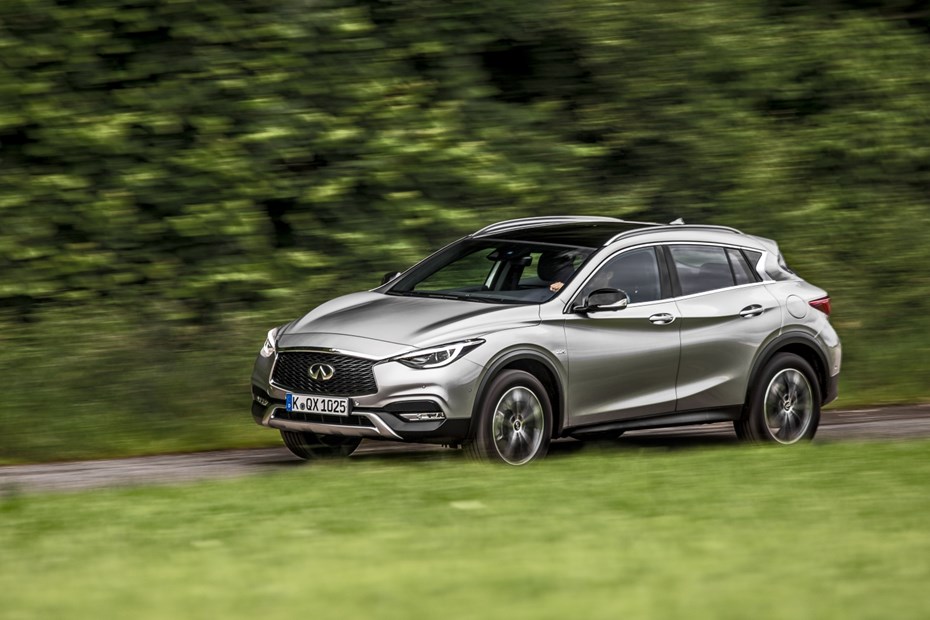
- Simple engine range with two choices
- Q30’s smaller engines not carried over
- You can pick a 2.0-litre petrol or 2.1-litre diesel
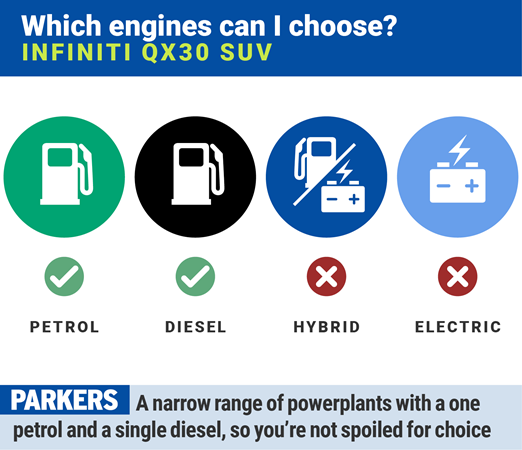
There’s a trimmed down range here compared with what you get in the Q30 hatchback – the 1.5 and 1.6-litre engines are off the agenda, with just two larger four-cylinder units sourced from Mercedes-Benz on offer.
QX30 2.0t petrol
Of the two units on offer the 2.0-litre petrol offers more power and pace but makes a little less sense due to its increased running costs.
It’s a second faster than the diesel from 0-62mph, clocking in at 7.3 seconds, and goes on to a higher top speed of 143mph.
That’s largely thanks to its 211hp and 350Nm of torque, although the latter is matched by the diesel engine.

It’s a bit more refined than the diesel but still sounds strained when pushed hard, and doesn’t offer much in the way of excitement or intrigue.
QX30 2.2d diesel
Ignore what the 2.2d badging suggests – the diesel engine under the QX30’s bonnet is Mercedes’ familiar – but clattery – 2.1-litre unit. While it’s slower than the petrol, it’s not by much, plus it costs less to run and feels punchier in the middle of the rev range.
Its 170hp and 350Nm of torque means this version of the QX30 take 8.4 seconds to get from 0-62mph, and it tops out at 134mph.
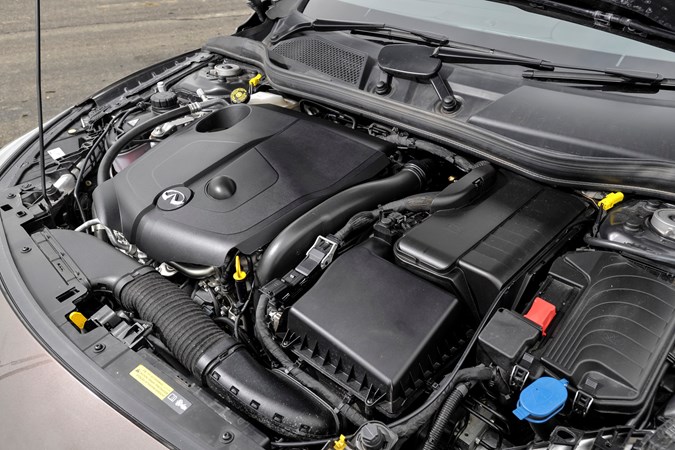
Although it should be a reliable motor, it is now starting to feel its age, particularly when pushed hard when it becomes quite noisy. Infiniti employs special noise cancelling technology specifically for this engine and while it helps to a degree, it’s not entirely effective.
Automatic-only gearbox
Only one choice here – all QX30 models use a seven-speed dual clutch automatic gearbox, unlike the Q30 which offers a manual.
It does a decent job and feels well matched to either engine, although it’s a bit hesitant and only really comes alive when you take control of it with the steering wheel mounted paddles.
- Infiniti QX30 features comfort-biased suspension
- It still steers and grips well but doesn’t offer much fun
- Standard all-wheel drive boosts traction

Standard-fit all-wheel drive means you high levels of traction but there isn’t much fun to be had pushing the limit of the tyres – the QX30 rolls around like its hatchback stablemate, the Q30, despite the fact it features a revised suspension set up.
In addition you get a raised ride height and off-road styling but we wouldn’t recommend you attack any tricky green lanes or quarries in the QX30 – it’ll tackle a campsite or mud track but that’s about its limit.
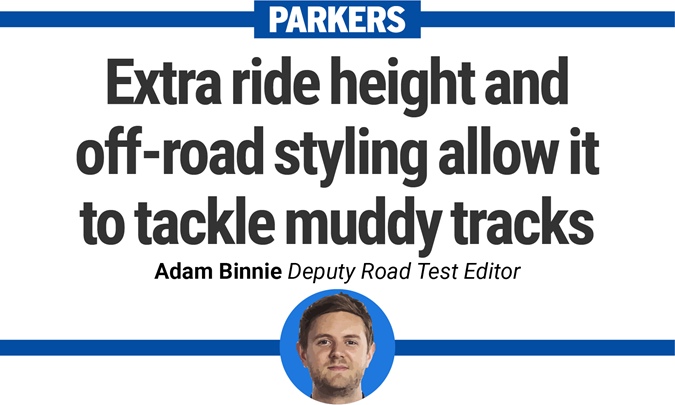
The steering is surprisingly good – it reacts quickly to small movements of the heavy wheel and gives the QX30 a feeling of poise. It’s quite heavy though, offering little feedback to what is going on under the front wheels.
This means it can be quite hard work to park or navigate around a tight and twisty city route. The better value Toyota C-HR is better in this respect.


